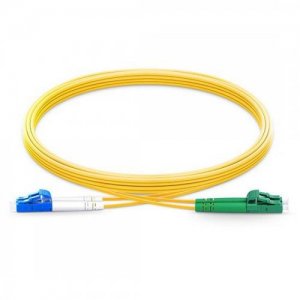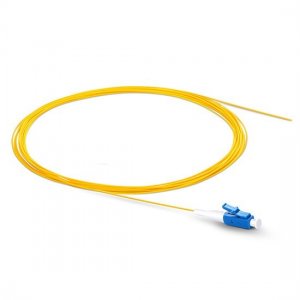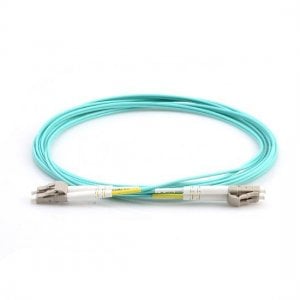Explore the pros and cons of fiber pigtails and patch cables in our blog, helping you make informed choices for your network infrastructure needs.
Choosing Between Fiber Pigtail And Fiber Patch Cable: Pros And Cons
In today's fast-paced world, data transmission is a critical aspect of nearly every industry. Whether you're managing a data center, telecommunications network, or simply setting up a home network, the choice between fiber pigtails and fiber patch cables is a fundamental one.
These two fiber optic solutions are essential components of any network infrastructure, but they serve different purposes and come with their own set of advantages and challenges. In this blog, we'll delve into the pros and cons of fiber pigtails and patch cables to help you make an informed decision.
Fiber Pigtails
Fiber pigtails are short, single-ended fiber optic cables with a connector at one end and bare fiber at the other. They are typically used to connect fiber optic cables to various devices, such as switches, routers, and optical transceivers. Here are some of the advantages and challenges associated with fiber pigtails:
Pros:
1. Space Efficiency: Fiber pigtails are compact and take up minimal space. This makes them ideal for applications where space is limited, such as inside crowded data centers or in tight telecom enclosures.
2. Customization: Pigtails are available with a variety of connector types, allowing for customization to suit specific network requirements. This flexibility makes them adaptable to a wide range of scenarios.
3. Cost-Effective: Fiber pigtails are usually less expensive than patch cables. If you need to make multiple connections, opting for pigtails can save you money without compromising on performance.
4. Reliability: Pigtails are less prone to wear and tear since they typically remain stationary once installed. This can result in greater long-term reliability, making them a preferred choice for permanent installations.
Cons:
1. Labor-Intensive Installation: Installing fiber pigtails can be more labor-intensive compared to using pre-terminated patch cables. Proper termination and fusion splicing may require specialized skills and equipment.
2. Less Flexibility: Once installed, pigtails are less flexible in terms of reconfiguration or relocation. This can be a drawback if your network setup frequently changes.
3. Connector Cleaning: Since the bare fiber end of a pigtail is exposed, it requires more careful handling and frequent cleaning to prevent contamination, which can degrade signal quality.
Fiber Patch Cables
Fiber patch cables, on the other hand, are pre-terminated fiber optic cables with connectors on both ends. They are commonly used for connecting devices, patch panels, and distribution frames. Here are the pros and cons of using fiber patch cables:
Pros:
1. Ease of Installation: Patch cables are plug-and-play, requiring no splicing or termination on-site. This simplifies the installation process and reduces the risk of errors.
2. Flexibility: Patch cables are easy to move, reconfigure, or replace. This flexibility is advantageous in situations where network changes occur frequently.
3. Connector Protection: Both ends of a patch cable come with connectors, offering protection against contamination. This helps maintain signal integrity and reduces the need for frequent cleaning.
4. Quick Deployment: Patch cables enable rapid deployment of network connections, making them suitable for temporary setups or when time is of the essence.
Cons:
1. Higher Cost: Fiber patch cables tend to be more expensive than pigtails due to the pre-terminated connectors. If you require a large number of cables, the cost can add up quickly.
2. Space Consumption: Patch cables, with their connectors on both ends, occupy more space than pigtails. This can be a concern in crowded environments.
3. Connector Wear: The connectors on patch cables are subject to more wear and tear since they are frequently plugged and unplugged. Regular inspection and replacement may be necessary to maintain performance.
Making The Right Choice
The choice between fiber pigtails and patch cables ultimately depends on your specific network requirements and constraints. Here are some factors to consider when making your decision:
1. Network Type: Consider whether your network is permanent or temporary. For permanent installations, where space is limited and the cost is a concern, fiber pigtails may be the better choice. For temporary setups or situations that require flexibility, patch cables are a preferred option.
2. Skill and Equipment: Assess your team's skill level and the availability of equipment. If you have the necessary expertise and tools for splicing and termination, pigtails may be a viable choice. Otherwise, patch cables offer a more straightforward plug-and-play solution.
3. Budget: Evaluate your budget and the scale of your project. Patch cables may be more cost-effective for small-scale deployments, while pigtails can be economical for larger networks.
4. Maintenance: Consider the maintenance requirements of your network. If cleanliness and signal integrity are top priorities, patch cables may be a better fit. If long-term reliability and stability are crucial, pigtails may be the way to go.
If you need help in deciding between fiber pigtails and fiber patch cables, Fibermart can help. With a presence in both Hong Kong and the United States, Fibermart is dedicated to researching, designing, and manufacturing cutting-edge fiber connectivity network solutions. Our products and solutions include Polarization Maintaining Fiber Cable, Polarization Maintaining Splitter, Polarization Maintaining Coupler, and more.
Get in touch with us today for high-quality fiber optic solutions.


















Еще ни один комментарий не опубликован.